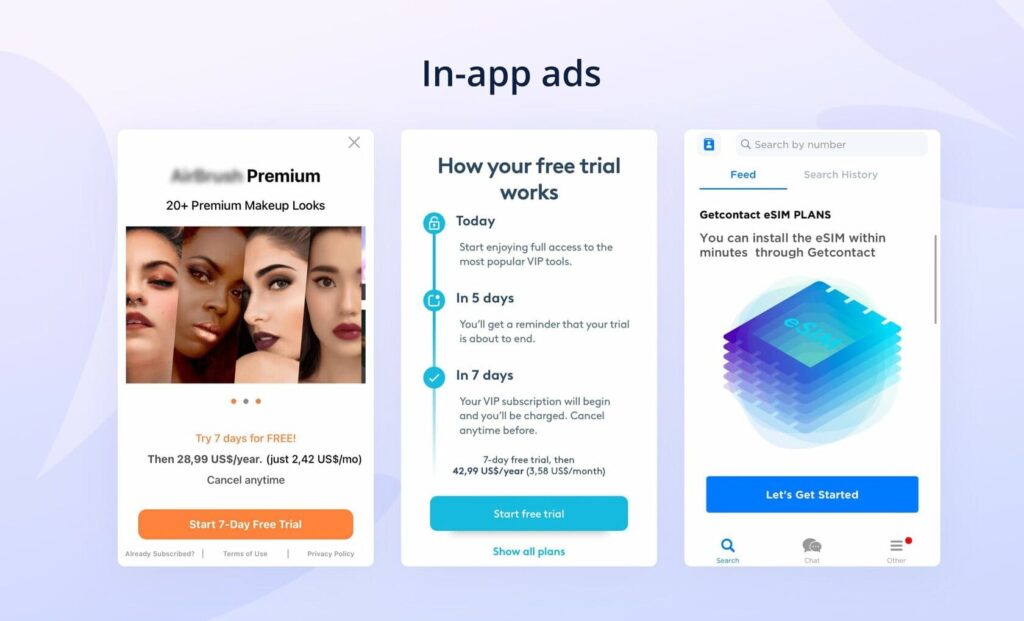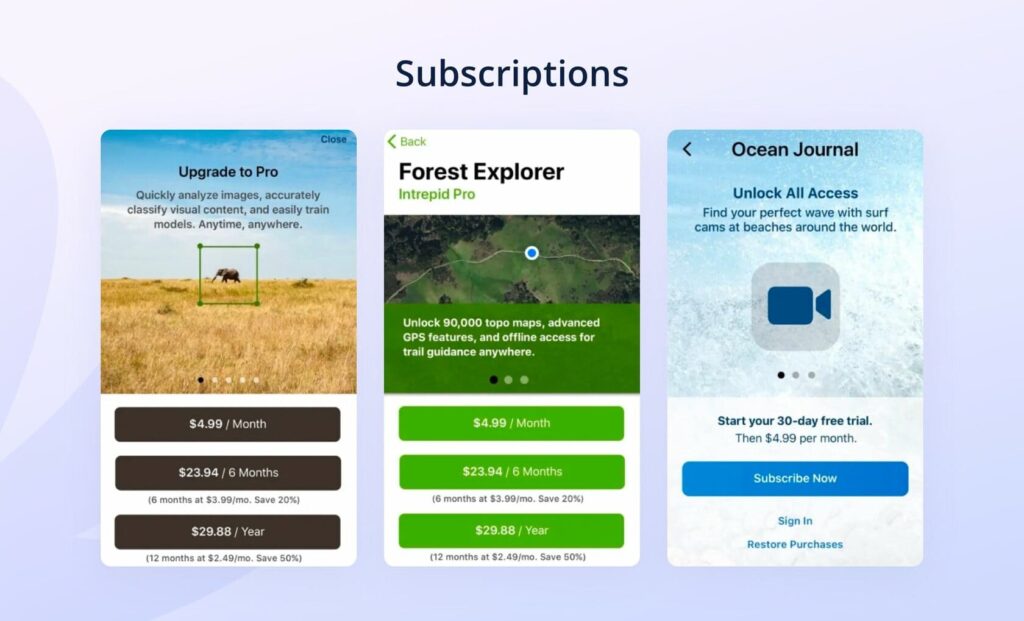The COVID-19 pandemic has triggered a massive surge in the number of mobile game users worldwide, which has inevitably led to an increase in the number of apps on offer. With around 3,700 new Android titles and a little over a thousand new iOS apps hitting the Google Play and Apple App Store every day, the competition between developers and their products is fierce. So, what do you do to make your app stand out from the crowd? A no less important question is: “How do you make your game profitable?” The answer lies within the monetization of mobile games.
Table of Contents
In this post created by Asolytics experts, we will discuss what mobile game monetization is and why all apps need to use it. We will also closely examine some efficient mobile game monetization strategies that yield the best results. Additionally, we will briefly touch on the topic of ads that appear in mobile games and see how much revenue they can generate for developers. Hopefully, upon reading this guide, you will have a better understanding of how to choose and implement the right monetization model for your specific mobile game and which pitfalls to avoid along the way. Do not go anywhere – this should be very interesting!
What Is Mobile Game Monetization?
You have created a million-dollar mobile game, congrats! The next logical question is: “How can I monetize gameplay to make it actually bring a million dollars?” Unfortunately, there is no universal best ways to monetize an app, meaning you will have to find out what works for you by probing, testing, and rejecting dozens of various ideas. In the process, you will likely stumble upon those that are better suited to your needs than others, but we encourage you to keep looking until you are 100% sure you have struck the perfect one. It is the only way to achieve your desired profitability targets fast.
Below in this post, we will talk in more detail about how to monetize a game and how to understand that a particular mobile game business model fits your product. For now, however, let us define the term “mobile game monetization.”
In a nutshell, monetizing mobile games is how you can make your creation bring you money. It involves the central strategy as well as a set of tactics and techniques that game developers utilize to generate profits. Monetization is not a feature you can incorporate into your app as an afterthought in the post-production stage – it should be there from the start, possibly impacting your product’s features, design, and overall development strategy.
At that, you must do your best to ensure that your chosen monetization approach does not interfere negatively with your player’s user experience. Obviously, any mobile game developer’s ultimate goal is to earn, but if your player realizes it the moment they launching a mobile app, you have done a poor job and will most likely fail in getting what you want. You will need to use the best market intelligence tools at the early stages of your game development to understand your target audience’s expectations and clearly see which monetization tactics will hit the fertile soil and which will avert users.
How Mobile Games Make Money?
Years ago, there used to be just two possible ways for a mobile game developer to make money out of their product: make it paid or leave it free but pack the game with ads. As game production becomes a more complex, multi-faceted process requiring much investment of knowledge and effort, the development costs grow too. The need to make your app profitable to cover the expenses you have already suffered is more acute than ever. By choosing the wrong way to go about monetization in gaming, you risk never generating enough income to support your current business needs and future projects.
So, how do gaming apps make money today? First things first, most gaming apps are free-to-play (F2P). That is what players expect, and it is what you will have to give them to score their trust and interest. Hence the conclusion: You will have to rely on microtransactions and in-app ads to earn you cash. In this post, we will focus on monetization models and strategies geared primarily toward F2P mobile games.
What are the challenges?
The biggest hardship you will face when trying to make money with mobile games is working out a solution that suits every party involved, namely the developer and the player. The developer naturally wants to squeeze as much profit from their creation as possible, whereas the user’s goal is to enjoy the product to the fullest while spending as little as they can – if anything. If you cannot find a way to maintain a healthy balance between these two opposing aspirations, your game is doomed to languish in obscurity.
The good thing here is that your user knows you need to make money out of your game and is prepared to see some monetization features implemented. If you do not blow it up out of all proportion, you will probably be able to successfully monetize your app and keep users happy with the experience.
Mobile Game Monetization Models That Work
We have answered the question: “How do mobile games earn money?” Now, let’s look at some of the most efficient monetization models used by modern-day developers. When talking about monetizing your F2P mobile game, there are three key models worth mentioning. Some developers have even gone so far as to use a combination of them to boost their revenues further.
In-app ads
It is what many call the “freemium” model. While free for the user to download, the game makes money by showing various third-party ads and scoring a payment from the advertiser every time someone clicks on such ads.
The risk associated with adopting this monetization model is that it can scare off users who hate advertisements and aren’t willing to tolerate those, even for the sake of free gameplay. A recent mobile game ads revenue research revealed that only 64% of free mobile game users are OK with being exposed to ads in the game. That means a whopping 36% of players would rather quit your game for good than sit through a few ad impressions.

In-app purchases/microtransactions
The most widely used game monetization model of 2022, the in-app purchase economy allows players to install and play the game for free but will charge you for unlocking any advanced features, limited edition collectibles, and other premium in-game experiences.
The biggest mistake a mobile game developer can make when implementing this model is limiting the progress or content for users who do not cave in and refuse to pay to the point where the player gets disinterested in using the game any longer.

Subscriptions
This model allows developers to receive a recurring income from selling access to specific, ad-free content within their game for a limited time. Game developers rarely use subscriptions as a standalone monetization model; usually, they are an extension of in-app purchases.
If you cannot decide which of the three options suits your needs best, you don’t have to choose just one. Perhaps, yours is the kind of business that will benefit most from a mixed monetization model. Define which model you will use as the foundation for your monetization strategy and your main revenue stream and build on it further.

Main Android Game Monetization Strategies
Here are the three most unusual and effective mobile game monetization strategies and techniques you can choose to earn money on your product. These are guaranteed to grip your users’ attention and motivate them to pay:
- Add-ons. Selling add-ons is one more approach to monetizing a mobile game. While a game can be distributed on a free-to-play basis, additional content, such as expansion packs, can be made available for a fee. This strategy should work best if people are keen on your game and the add-on offers a genuinely good value for money. One effective strategy to enhance Android game monetization is carefully considering the App Store fee when setting the price for in-app purchases, ensuring profitability without deterring potential buyers.
- Sponsored content. It is all about product placement. Finding a brand that is willing to have its products featured in your game can take time, but in return, you will be rewarded with an additional or even principal source of revenue. Besides, sponsored content is where you can let your creativity go wild. Just make sure your game is superb – brands fear being linked to low-quality titles more than anything.
- Recommendation engine. Building your own recommendation engine where you will suggest exciting games developed by your competitors for a commission isn’t a bad idea. It will let you generate additional income while also showing your user base that you are a big-time developer in a position to endorse others. To learn more about what engines exist for mobile games, please visit the Asolytics official website and study our recent post on game apps development.
How Much Money Do Mobile Games Make Per Ad?
There is no quick answer to the question, “how much money do mobile games make from ads?” It is very individual and depends on the game genre and the ad type. On average, a mobile game advertising strategy that involves rewarded video ads will bring you around $0.02 per impression; interstitial mobile ads can give you $0.16 for completion, while an offer wall ad unit pays somewhere close to $2.50.
Here is another exciting piece of statistics for you: 26.03% of mobile game advertisers are interested in paying to have their products promoted on casual games. Puzzle games and simulation games come in second and third in this ranking, with 12.47% and 9.64%, respectively. Talking about rewarded video ad units, casino and action games bring in the most revenue, and hyper-casual/casual games are lagging furthest behind.
Best Way To Monetize Mobile Games: Top Practices of 2025
We sincerely hope this post was able to help you get a much better grasp on mobile game monetization and its key models and strategies. Summing up, there is no fit-for-all approach to monetizing a mobile game; each product requires the use of different models and techniques to make it work and grant you profit. While it means more investment of time and effort on your part, it is also a good thing because it gives you a chance to get creative and come up with one solution that is 100% perfect for your unique needs.
If you enjoyed reading this article and feel ready to take in some more advanced information, come straight to the Asolytics website and navigate our blog. You will find plenty of cool stuff about mobile game monetization, app development, app store promotion, mobile gaming industry trends, and more. Also, do not forget to tell us what you think about this post, and feel free to share your own best way to monetize mobile games in the comments section below. We would love to chat!




